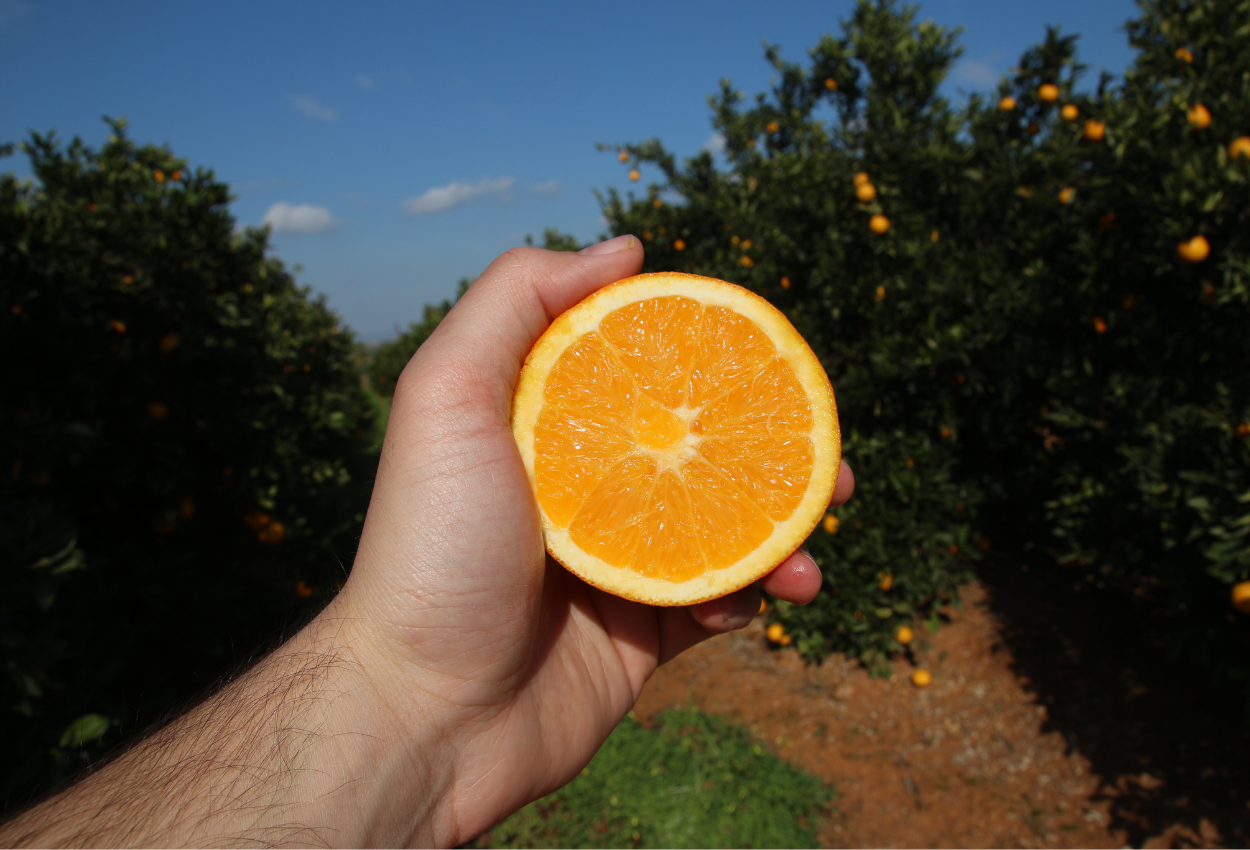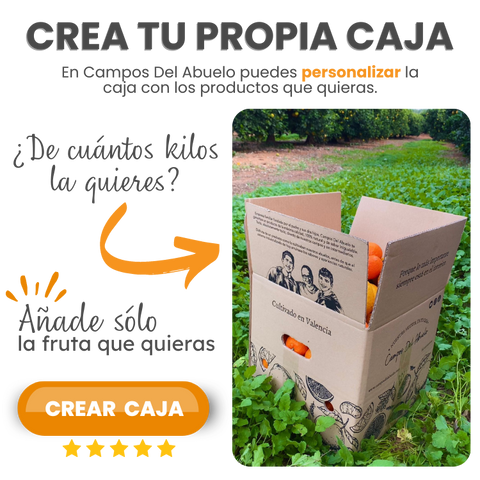Sometimes it is not so easy to recognize whether an orange is suitable for juice or for eating. In this article, and directly from the field, we will tell you about some of the problems that an orange can present . As farmers, we are going to share our knowledge, so that you know when it is not a good idea to eat that orange you are having doubts about.
As always when we talk about oranges, we have the words of Eduardo, farmer and founder of Campos del Abuelo . Look how simple he explains how to know if an orange is in good condition:
To know if an orange is good on the outside, one of the conditions is that it is hard, that the fruit is hard , that it is not soft. That is very important. The color, in principle, has to be intense orange , especially in winter varieties. And when you smell it, it has a fresh orange aroma, it does not have a medicinal aroma , which is what those that have been in the cell for a long time and with treatments have so that they last.
Something important. Fruits and vegetables correspond to a certain growing season. It has to do with the climatic conditions for the plant to sprout, pollinate, flower and then bear fruit. That is why our first recommendation is that you consume seasonal oranges .
As with avocados , they are sometimes harvested at an unripe stage. They are then stored in cold storage and ripened using strange chemicals.
In our case, in our fields in the Ribera Alta del Júcar, in Valencia (Spain), we select the oranges from the tree at their optimum point of ripeness, store them in boxes and send them directly to your home .

But when the opposite occurs and they go through an unnatural process , it is likely that they will no longer arrive in good condition at the point of sale and, once they reach your home, well, they end up going bad. Sometimes the oranges on display look very good on the outside, but on the inside they are of dubious quality.
Why are some oranges treated with post-harvest chemicals?
Of course, this is not the case with the oranges we grow at Campos del Abuelo, but taking advantage of the chat with Eduardo, we asked him why chemicals are applied to the outside of the oranges once they have been harvested and he told us:
For example, some fungicides are used to soak the oranges with them in order to protect them. Because there is humidity in the cell where the oranges are kept, it is very possible that some orange that is punctured or damaged will rot . So, to prevent that one from contaminating the rest, they are soaked with a fungicide , and that one will rot, but not those that are in contact with it.
Although this always affects the taste of the orange , it is a useful tool when working in a warehouse. Even more so when there are 10,000, 15,000 and even 20,000 kilos of oranges in a cell. And if they are not protected, if some of them rot, it would be a disaster, because in just a few days, the fungal spores move from one to the other very quickly.
Campos del Abuelo oranges do not go through this process , but instead, they arrive from the tree to your home without any post-harvest chemicals . That is why, just as they look on the outside, they are as good on the inside.

Orange tips straight from the field
So, we're back to the most important tip in this article: eat oranges when they're in season . And if you don't want to run out of juice, you can always freeze orange juice to drink later. But, well, nothing compares to freshly squeezed orange juice, especially because if you store it, it loses flavor and also nutrients.
For the distracted, we advise that in Spain, the orange season begins in autumn with the Navelina orange and ends in summer with the Valencia variety .
Farmer's tip: Late November is when oranges are really good.
This is where tip number two comes from : consume oranges whose place of origin and provenance you know . This will ensure that they don't travel too far and that they arrive at your home in good condition.

So to wrap things up, Eduardo tells us a little more about oranges and the important factors for their good or bad condition…
In general, once you have picked an orange, the most important factor is time . The longer you wait, the more the orange deteriorates, the smell of the chambers, the products that have been put into it, all of this deteriorates in some way. And as for the skin, the same thing, the passage of time deteriorates it.
As I said at the beginning, it is best if the orange is hard, has an orange aroma and good color . With these three things, the orange is usually in perfect condition.

There is a particular case that can occur if you buy 100% natural oranges and that is that they may have a little white or green mold on some areas of their skin. This may be because it has been perforated, but what you should do is remove that orange so that the box does not become infected and immediately clean the others to avoid contamination .
We hope that these tips have been useful to you. Remember that by visiting our online fruit and vegetable store directly from our fields you can personalize your box with the seasonal products you want and receive it at home.
Until next time and thanks for reading!




